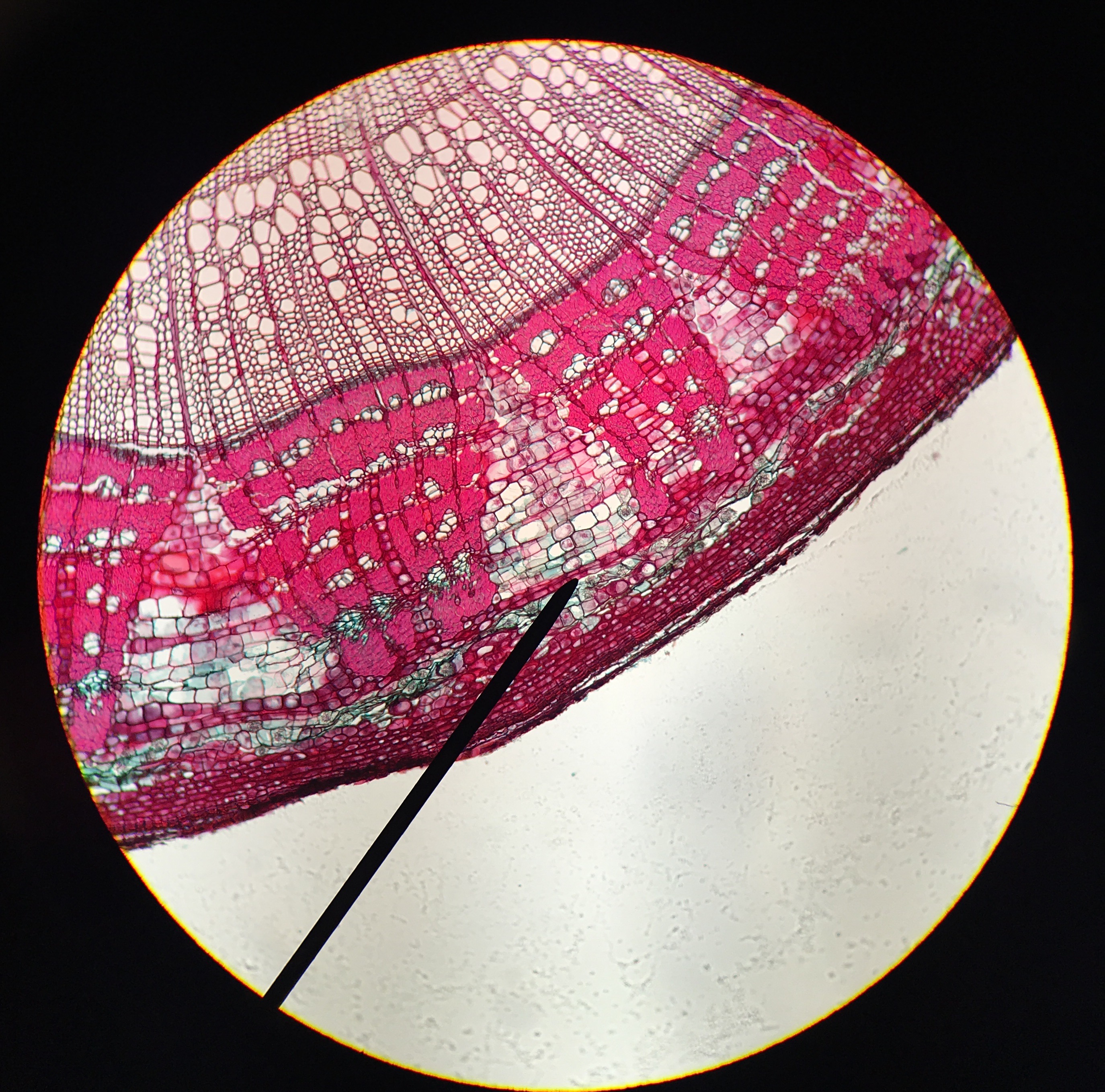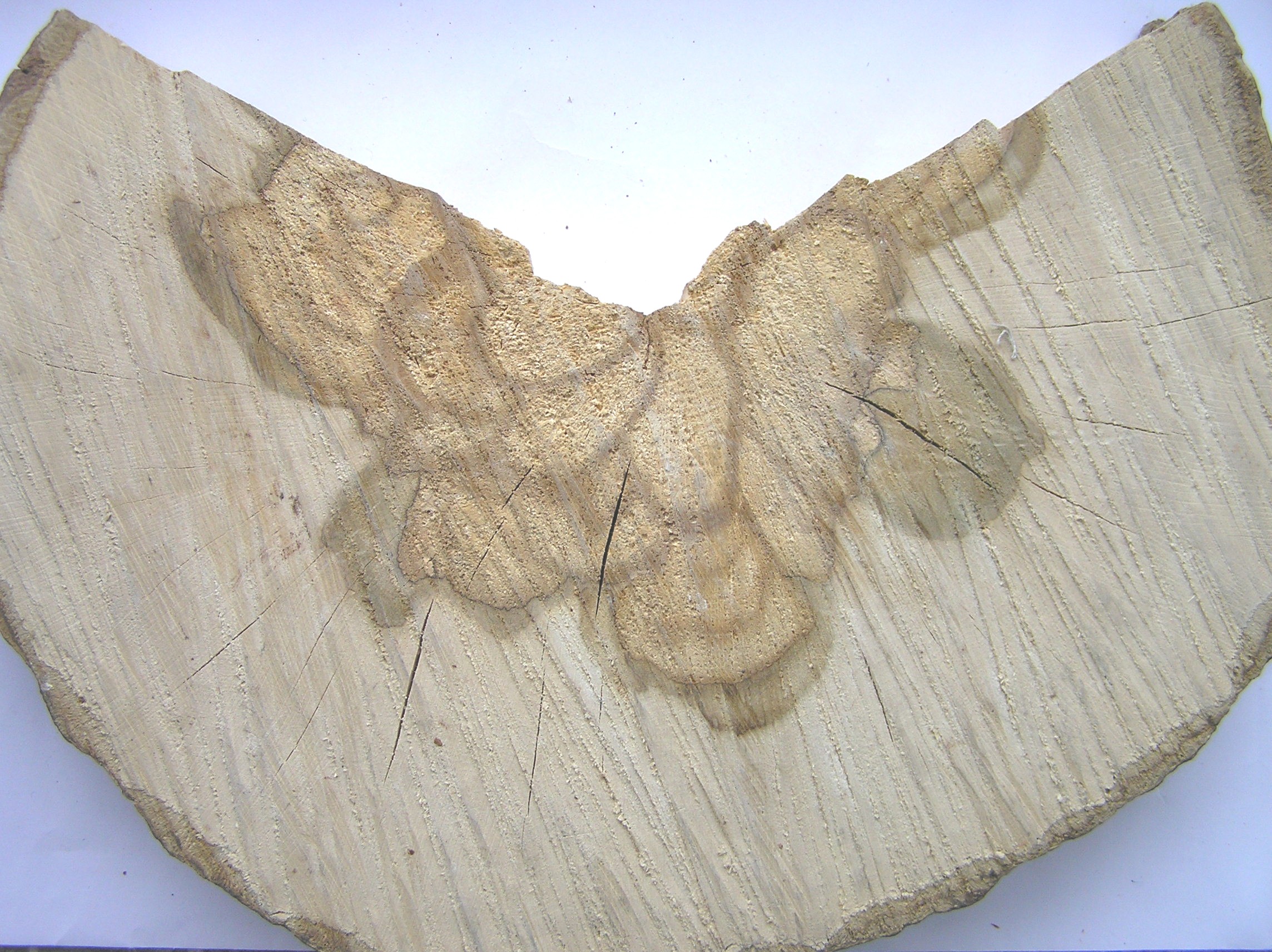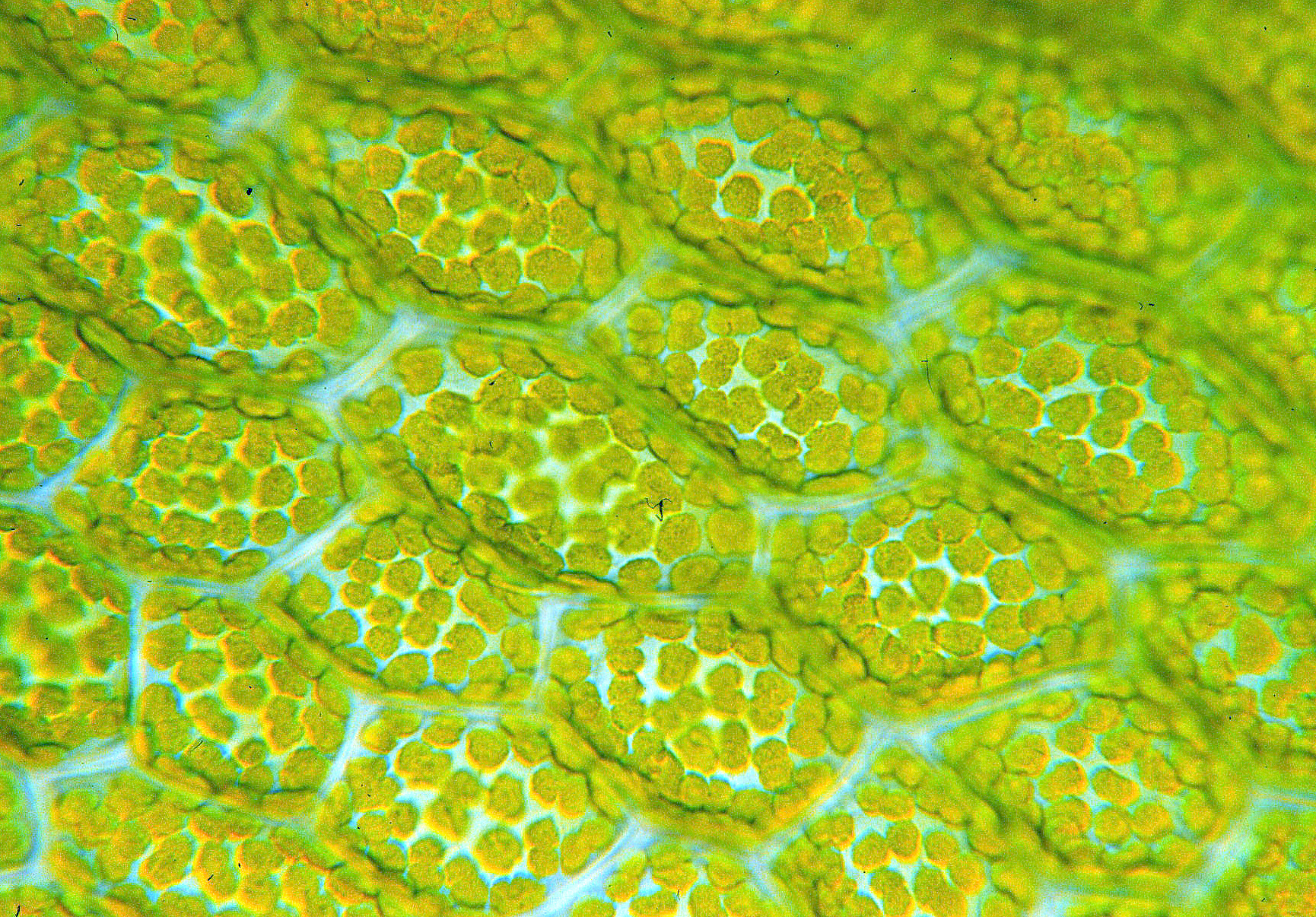|
Medullary Ray (botany)
Medullary rays are cellular structures found in some species of wood. They appear as radial planar structures, perpendicular to the growth rings, which are visible to the naked eye. In a transverse section they appear as radiating lines from the centre of the log. In an axial section they may appear as a variety of transverse markings, depending on how close the section is to the plane of the ray. In a tangential section they may be hard to see at all. They are formed by the activity of fascicular cambium. During the process of the division of cambium, the cambium cuts out cells on both the outer and inner side. These cells are parenchymatous. Most of these cells transform into xylem and phloem. But certain cells don't transform into xylem and phloem and remain as such. These cells cut out by the cambium towards the periphery are phloem parenchyma while those towards the pith are xylem parenchyma. Both of these cells together work as secondary medullary rays. These medullary or p ... [...More Info...] [...Related Items...] OR: [Wikipedia] [Google] [Baidu] |
Wood
Wood is a porous and fibrous structural tissue found in the stems and roots of trees and other woody plants. It is an organic materiala natural composite of cellulose fibers that are strong in tension and embedded in a matrix of lignin that resists compression. Wood is sometimes defined as only the secondary xylem in the stems of trees, or it is defined more broadly to include the same type of tissue elsewhere such as in the roots of trees or shrubs. In a living tree it performs a support function, enabling woody plants to grow large or to stand up by themselves. It also conveys water and nutrients between the leaves, other growing tissues, and the roots. Wood may also refer to other plant materials with comparable properties, and to material engineered from wood, or woodchips or fiber. Wood has been used for thousands of years for fuel, as a construction material, for making tools and weapons, furniture and paper. More recently it emerged as a feedstock for the productio ... [...More Info...] [...Related Items...] OR: [Wikipedia] [Google] [Baidu] |
Cambium
A cambium (plural cambia or cambiums), in plants, is a tissue layer that provides partially undifferentiated cells for plant growth. It is found in the area between xylem and phloem. A cambium can also be defined as a cellular plant tissue from which phloem, xylem, or cork grows by division, resulting (in woody plants) in secondary thickening. It forms parallel rows of cells, which result in secondary tissues. There are several distinct kinds of cambium found in plant stems and roots: * Cork cambium, a tissue found in many vascular plants as part of the periderm. * Unifacial cambium, which ultimately produces cells to the interior of its cylinder. * Vascular cambium, a lateral meristem in the vascular tissue of plants. Uses The cambium of many species of woody plants are edible; however, due to its vital role in the homeostasis and growth of woody plants, this may result in death of the plant if enough cambium is removed at once. The cambium can generally be eaten raw or cooke ... [...More Info...] [...Related Items...] OR: [Wikipedia] [Google] [Baidu] |
Parenchymatous
Parenchyma () is the bulk of functional substance in an animal organ or structure such as a tumour. In zoology it is the name for the tissue that fills the interior of flatworms. Etymology The term ''parenchyma'' is New Latin from the word παρέγχυμα ''parenchyma'' meaning 'visceral flesh', and from παρεγχεῖν ''parenchyma'' meaning 'to pour in' from παρα- ''para-'' 'beside' + ἐν ''en-'' 'in' + χεῖν ''chyma'' 'to pour'. Originally, Erasistratus and other anatomists used it to refer to certain human tissues. Later, it was also applied to plant tissues by Nehemiah Grew. Structure The parenchyma is the ''functional'' parts of an organ, or of a structure such as a tumour in the body. This is in contrast to the stroma, which refers to the ''structural'' tissue of organs or of structures, namely, the connective tissues. Brain The brain parenchyma refers to the functional tissue in the brain that is made up of the two types of brain cell, neurons a ... [...More Info...] [...Related Items...] OR: [Wikipedia] [Google] [Baidu] |
Ground Tissue
The ground tissue of plants includes all tissues that are neither Epidermis (botany), dermal nor Vascular tissue, vascular. It can be divided into three types based on the nature of the cell walls. # Parenchyma cells have thin primary walls and usually remain alive after they become mature. Parenchyma forms the "filler" tissue in the soft parts of plants, and is usually present in Cortex (botany), cortex, pericycle, pith, and Medullary ray (botany), medullary rays in primary Plant stem, stem and root. # Collenchyma cells have thin primary walls with some areas of secondary thickening. Collenchyma provides extra mechanical and structural support, particularly in regions of new growth. # Sclerenchyma cells have thick Lignin, lignified Secondary cell wall, secondary walls and often die when mature. Sclerenchyma provides the main structural support to a plant. Parenchyma Parenchyma is a versatile ground tissue that generally constitutes the "filler" tissue in soft parts of plants. It ... [...More Info...] [...Related Items...] OR: [Wikipedia] [Google] [Baidu] |
Tylosis (Botany)
In woody plants, a tylosis (plural: tyloses) is a bladder-like distension of a parenchyma cell into the lumen of adjacent vessels. The term tylosis summarises the physiological process and the resulting occlusion in the xylem of woody plants as response to injury or as protection from decay in heartwood. It is a key process in wall one of the compartmentalization of decay in trees (CODIT) and other woody plants. Anatomy Observed in section under a microscope, tyloses appear as balloon-like protrusions emanating from axial paratracheal parenchyma cells into xylem vessels through pits linking the two. In some types, there may be a distinct barrier between the tyloses emanating from the pits into the vessels, while they may be barely distinguishable in other cases. Role in compartmentalization Tylosis in the vessels of flowering plants counteracts the axial spread of fungal hyphae and other pathogens by slowing down their vertical spread with a physical barrier. A similar process o ... [...More Info...] [...Related Items...] OR: [Wikipedia] [Google] [Baidu] |
Quartersawn
Quarter sawing or quartersawing is a woodworking process that produces quarter-sawn or quarter-cut boards in the rip cutting of logs into lumber. The resulting lumber can also be called ''radially-sawn'' or simply ''quartered''. There is widespread confusion between the terms ''rift sawn'' and ''quarter sawn'' with the terms defined both with opposite meanings and as synonyms. Quarter-sawn boards have greater stability of form and size with less cupping, shrinkage across the width, shake and splitting, and other good qualities. In some woods such as oak, the grain produces a decorative effect which shows a prominent ray fleck, while sapele is likely to produce a ribbon figure. Process When boards are cut from a log, they are usually rip cut along the length (axis) of the log. This can be done in three ways: plain-sawing (most common, also known as flat-sawn, bastard-sawn, through and through, and tangent-sawn), quarter-sawing (less common), or rift sawing (rare). In flat-sa ... [...More Info...] [...Related Items...] OR: [Wikipedia] [Google] [Baidu] |
Figure (wood)
{{More references, date=March 2012 In wood, figure refers to the appearance of wood, as seen on a longitudinal surface (side-grain): a "figured wood" is not plain. The figure of a particular piece of wood is, in part, due to its grain and, in part, due to the cut, or to innate properties of the wood. A few of the tropical hardwoods, like the rosewoods, may have a unique figure. Types of figure include: angel step, "bear scratches," bird's eye, blister, burl, curl, ribbon curl, dimple, fiddleback, flame A flame (from Latin '' flamma'') is the visible, gaseous part of a fire. It is caused by a highly exothermic chemical reaction taking place in a thin zone. When flames are hot enough to have ionized gaseous components of sufficient density they ..., wide flame, "ghost", pin stripe, quilted, spalted and tiger stripe. Wood ... [...More Info...] [...Related Items...] OR: [Wikipedia] [Google] [Baidu] |
Plant Anatomy
Plant anatomy or phytotomy is the general term for the study of the internal structure of plants. Originally it included plant morphology, the description of the physical form and external structure of plants, but since the mid-20th century plant anatomy has been considered a separate field referring only to internal plant structure. Plant anatomy is now frequently investigated at the cellular level, and often involves the sectioning of tissues and microscopy. Structural divisions Some studies of plant anatomy use a systems approach, organized on the basis of the plant's activities, such as nutrient transport, flowering, pollination, embryogenesis or seed development. Others are more classically divided into the following structural categories: : Flower anatomy, including study of the Calyx, Corolla, Androecium, and Gynoecium : Leaf anatomy, including study of the Epidermis, stomata and Palisade cells : Stem anatomy, including Stem structure and vascular tissues, buds ... [...More Info...] [...Related Items...] OR: [Wikipedia] [Google] [Baidu] |





